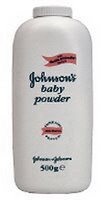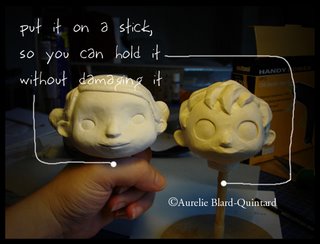PLASTICINE
Libellés :
Materials
Plasticine (or plasticine) is an oil-based clay used in the industry of design to make high precision models.
(it’s different from the regular plasticine you can find in any art/kid shop)
It has the property to react to the temperature: heat it and it will melt until it becomes liquid and you can pour it in a mould. Cold it, let’s say, in a freezer and it will become quite hard (well, it’s still plasticine)
It comes in different states of softness. Be careful when making a choice about it:
If you choose it too soft, a mere touch of your fingers will leave prints, and could affect the shape you’re modelling.
And if it’s too hard, it will be difficult to reach the stage where it’s melted enough to be modelled.
Tip : to soften the plasticine and have a nice soft look to it, you can use a bit of odourless turpentine : apply with parsimony (I use the tip of a cotton bud), i twill melt the surface and even it.

You can then wipe it very smoothly with baby wipes. (baby wipes are also great to get rid of dust)
An other great product to use is baby powder: apply it with a soft brush and rub the plasticine with your finger: it will become smooth and shiny

If you want to sculpt a head or whatever around a core, be careful to make it solid : wood is a good idea. Don’t use paper or any other material that will endlessly « collapse » on itself. And avoid using aluminium foil for the core it reacts weirdly with plasticine.
If you can, put you’re platicine lump on a top of a stick, so you can work on it without having to hold it in your hands


If you want to sculpt a head or whatever around a core, be careful to make it solid : wood is a good idea. Don’t use paper or any other material that will endlessly « collapse » on itself. And avoid using aluminium foil for the core it reacts weirdly with plasticine.
If you can, put you’re platicine lump on a top of a stick, so you can work on it without having to hold it in your hands

Where can you find plasticine?
Mine was PASCAL ROSIER's , and I found it in ADAM (parisian art shop)
No comments:
Post a Comment